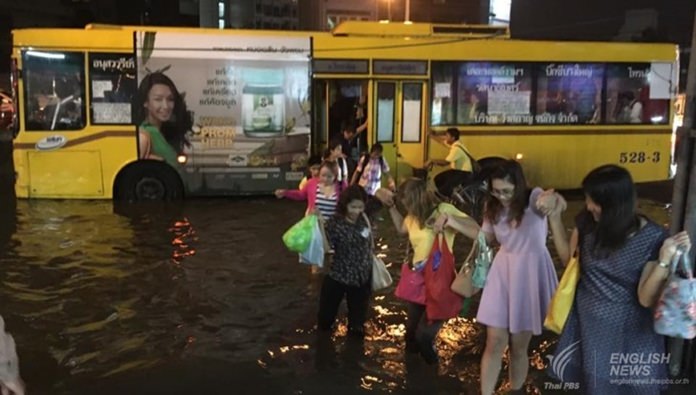Four factors are blamed for the seemingly insoluble flooding in Bangkok every time the capital city is lashed with widespread torrential rains.

The heavy rains on Monday afternoon, for an example, resulted in flooding in many parts of the city as the drainage system could not cope with excessive amount of rain water – about 100 mm of rain water in Bang Sue district for instance. Not to mention the resulting traffic nightmare which paralyzed the city for several hours.
Thai PBS reporters talked with several experts who gave different opinions about the flooding problem in Bangkok which could be summed up into four factors.
Not enough monkey cheeks to absorb excess water. Bangkok deputy governor Amorn Kitchawengkul earlier said that Bangkok needs another 10 monkey cheeks in addition to the existing 25 to hold excess water of up to 25 million cubic metres.
Existing monkey cheeks such as Makkasan swamp, Bung Gum and Bung Ekamai are not adequate, said the deputy governor.
Rapid city expansion has reduced the uninhabited space earlier used to store rain water. For instance, Lat Phrao which was used to be an open ground to hold rain water has now been taken over by housing estates and communities. Former Bangkok governor noted in a report last year that water retention area in suburban Bangkok had been reduced by 40 percent as a result of urbanization, leaving the city with fewer water retention area.
Professor Thanawat Charupongsakul of Thailand Environment Institute once pointed out that the city’s drainage system could cope with only 60mm/ hour of rain water because of the limited capacity of the drainage system.
The other factor is the garbage problem blocking the drainage system. As many as 10-20 tonnes of garbage are retrieved every day from the city’s klongs which are main conduit for the draining of water into the Chao Phraya river.




